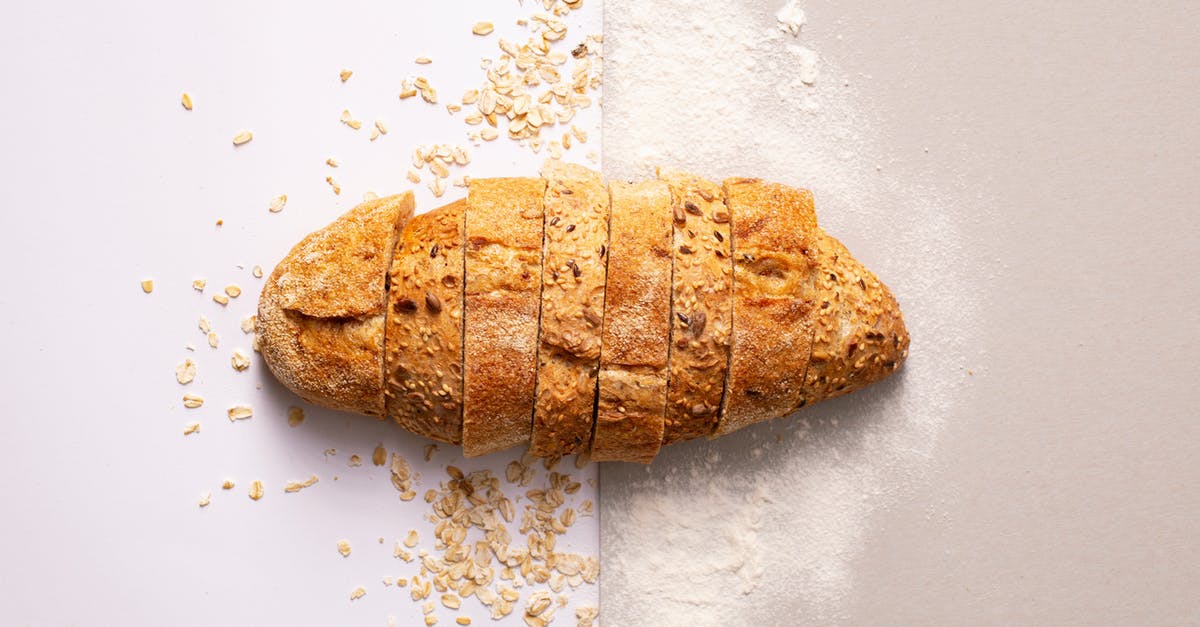Why does bread flour have lower protein content than all-purpose flour?

I decided that after six months of breadbaking, I'm ready to check flours. Up until now, I just bought the bread flour in the local shop (ok, the local shop is out of breadflour and yeast, because of covid, so the sourdough is a real saver now:)). Google tells me the most important difference between flour is the protein content. High protein for bread, low protein for cakes and in-between of all-purpose. Now this is a bit strange for me already, since I guess there are three important proteins that are in the flour: gliadin, glutenin and amylase, so this seems a bit generic, but the sources seem to imply that protein content is equivalent to how much gluten will form.
So I checked the labels of the local brand I use and was very surprised that the all-purpose flour (9.8 g) had in fact higher protein content than the bread flour (8.6 g). This would mean that the all-purpose would make a stronger dough (testing in progress). This might be a local phenomenon (Hungary), but it is more likely I'm not understanding something.
Some of the texts mention how fine the milling is, but I couldn't find any definitive answer to how the fineness of the milling would alter the properties of the dough. I also think the ash content of the bread flour is higher, but it is not exactly clear to me from the labels.
A translation of the table on the labels:
- energy
- fat
- of which saturated fat
- carbohydrates
- of which sugar
- dietary fibers
- protein
- salt
Could somebody clear this up for me? How can the bread flour protein content be higher than the all-purpose? Is milling fineness important (I'm not sure I could tell the difference between the too, so it can't be extreme)?
Best Answer
I would just say that you are translating the terms too literally. In the USA, it is typicall to sell flour made from hard spring wheat under the name "bread flour", because people there traditionally enjoy bread made from it. In other countries, people have different expectations of their bread, and hard spring wheat was probably not even available prior to globalization. So it is logical that companies there formulate flour to produce the locally preferred bread texture, and sell it under a term which literally means "bread flour". This is a very common linguistic/cultural phenomenon - in different parts of the world, the local term for "cheese" without further qualifiers means a very different style of cheese.
I have never been in Hungary, but on the Balkans, traditionally, there is a preference for soft, fluffy, white bread. So I wouldn't be surprised if this Hungarian company has formulated their bread flour to produce something in that direction.
Pictures about "Why does bread flour have lower protein content than all-purpose flour?"



Quick Answer about "Why does bread flour have lower protein content than all-purpose flour?"
The main difference between bread flour and all-purpose flour is a matter of protein. Bread flour, which comes in white and whole wheat varieties, has a higher protein content than all-purpose, usually 11-13%. It's called “bread flour” because most bread requires higher amounts of protein to produce lots of gluten.Does bread flour have more protein than all-purpose flour?
Bread flour is milled from hard spring wheat, which has a higher protein content than the hard winter wheat used in all-purpose flour. Protein adds strength to dough and enables loaves of bread to rise high. Our bread flour checks in at 12.7% protein, while our all-purpose flour is at 11.7%.Why does bread flour have more protein?
Bread flour is a high-protein flour made from hard spring wheat. Bread baking is the primary use for the flour due to its protein content, which gives structure and elasticity to yeasted bread. (Bread flour typically contains 10\u201313 percent protein compared to all-purpose flour, which has nine to 11 percent.)What type of flour has the lowest protein content of all flours?
Cake Flour: Cake flour is very finely milled and has the lowest protein content (5%-8%), ideal for delicate cakes and tender baked goods, like muffins. Most cake flour is bleached, which provides a lighter appearance and mellow taste.Which flour has the highest protein content?
Durum wheat flour has the highest protein of all flour. However, the gluten that forms when water is added is not elastic, so durum wheat needs to be used in combination with other flours. Bread can be made with up to 26% durum wheat flour.How Flour Protein Content Affects Bread Dough
More answers regarding why does bread flour have lower protein content than all-purpose flour?
Answer 2
Flour is no to equal to flour. White flour (European white not USA bleached) is generic name for various types of flour. I will jump straight to protein content in flour.
Amount of protein dictate how "strong" the flour is. Or how high hydrated it can be therefore how much the gluten and dough will be resistant to spreading without disruption. W is the "strength" of the flour. It's calculated from the dough on how well it's resistant do spreading, tearing and plastic. It is therefore related to gluten content (and protein) but is kind of estimation based on final product (dough)
9-10,5% protein = W90/130
10-11% protein = W130/200
10,5-11,5% protein = W170/200
12-12,5% protein = W220/240
13% protein =W300/310
13,5-15% protein = W340/400
Now, the "real" amount of protein is calculated by measuring amount of nitrogen and then multiplying by some factor (Kjeldahl method). That's why the real is in quotations.
If you look into italian flours you will notice that their W (strength) is tied to type of milling.
Tipo 00: minimum content of protein 9%
Tipo 0: minimum content of protein 11%
Tipo 1: minimum content of protein 12%
Tipo 2: minimum content of protein 12%
Integrale: minimum content of protein 12%
Which can also me misleading at it's calculated based on ash from 100g of flour. So tipo 00 can have 9% but also 12% of gluten. So it's also measured post factum of milling.
Now as you noticed minimum is 9%. So where the 8,6% came from? IMHO two reasons:
- calculations - for all flour that are very fine milled it's around 8,6 but due to mathematics and norms it get rounded to 9. Why is 9,8% not rounded to 10? Because that would fall well into W130/W200 type. Which might not deserve the name of "All-Purpose"
- moisture content - based on this almost all other calculations are based on. So All-Purpose flour is made from grain with different MC than bread flour therefore their protein content in final, packed product is different.
I've made some additional explanation in the comment (I don't knowy why it was deleted) that finesse of milling lower the amount of proteins because it lower the amount of milling brans.
Sources: Stack Exchange - This article follows the attribution requirements of Stack Exchange and is licensed under CC BY-SA 3.0.
Images: Any Lane, Any Lane, Mariana Kurnyk, Daria Shevtsova
